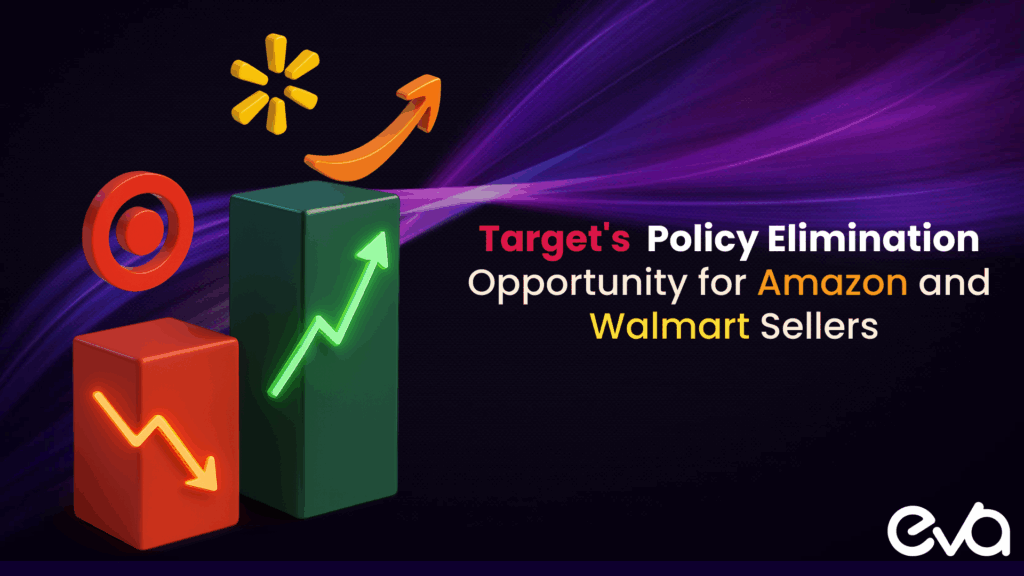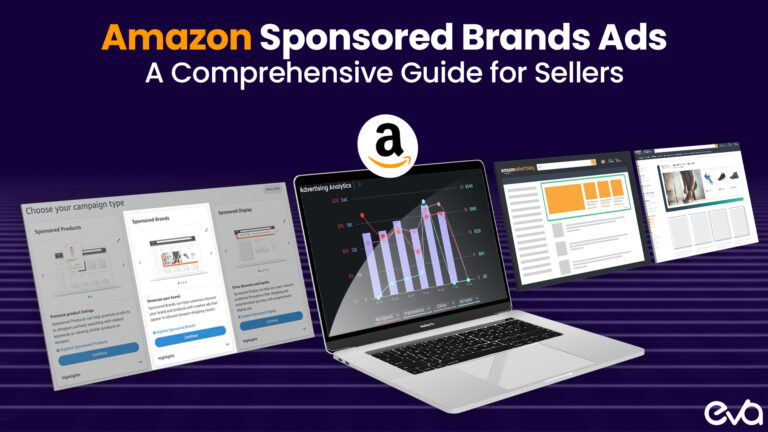Bottom Line Up Front: Target’s decision to end competitor price matching on July 28, 2025, is redirecting millions of price-conscious shoppers to Amazon and Walmart—creating a significant opportunity for e-commerce sellers to capture new customers and increase market share through strategic positioning and optimized advertising.
The retail landscape just shifted dramatically. Target’s elimination of its competitor price matching policy, which previously allowed customers to get Amazon and Walmart prices at Target stores, creates a strategic opening that savvy e-commerce sellers can leverage for substantial growth.
Table of Contents
- Understanding the Market Shift
- The Strategic Opportunity for E-Commerce Sellers
- Eva’s Four Pillars Strategy for Capitalizing on This Opportunity
- Immediate Action Plan for Sellers
- The Broader E-Commerce Evolution
- Competitive Advantages Through Strategic Response
- Looking Forward: Building Sustainable Growth
- Conclusion
Understanding the Market Shift
Target’s policy change comes at a critical time when 62% of paid units on Amazon are now sold by third-party sellers, marking an all-time high. This shift occurs against a backdrop of economic pressures where consumers are increasingly value-focused, making pricing strategy more crucial than ever for e-commerce success.
Shoppers who previously relied on Target’s price matching to get Amazon and Walmart deals in-store will now shop directly on those platforms. Prepared sellers can capitalize on this traffic redirection immediately.
The Strategic Opportunity for E-Commerce Sellers
Immediate Traffic Surge Potential
With Target eliminating competitor price matching, price-sensitive shoppers in categories like electronics, home goods, and consumer products will turn to Amazon and Walmart for better deals. This creates several immediate opportunities:
Increased Organic Traffic: As shoppers shift their browsing habits from Target stores to online platforms, properly optimized listings will naturally capture more views and potential conversions.
Enhanced Advertising Performance: PPC campaigns targeting value-focused keywords and deal-seeking behaviors will likely see improved ROI as the audience pool expands with former Target customers.
Market Share Expansion: Sellers who quickly adapt their strategies can capture customers who now need to choose between paying Target’s regular prices or shopping elsewhere for deals.
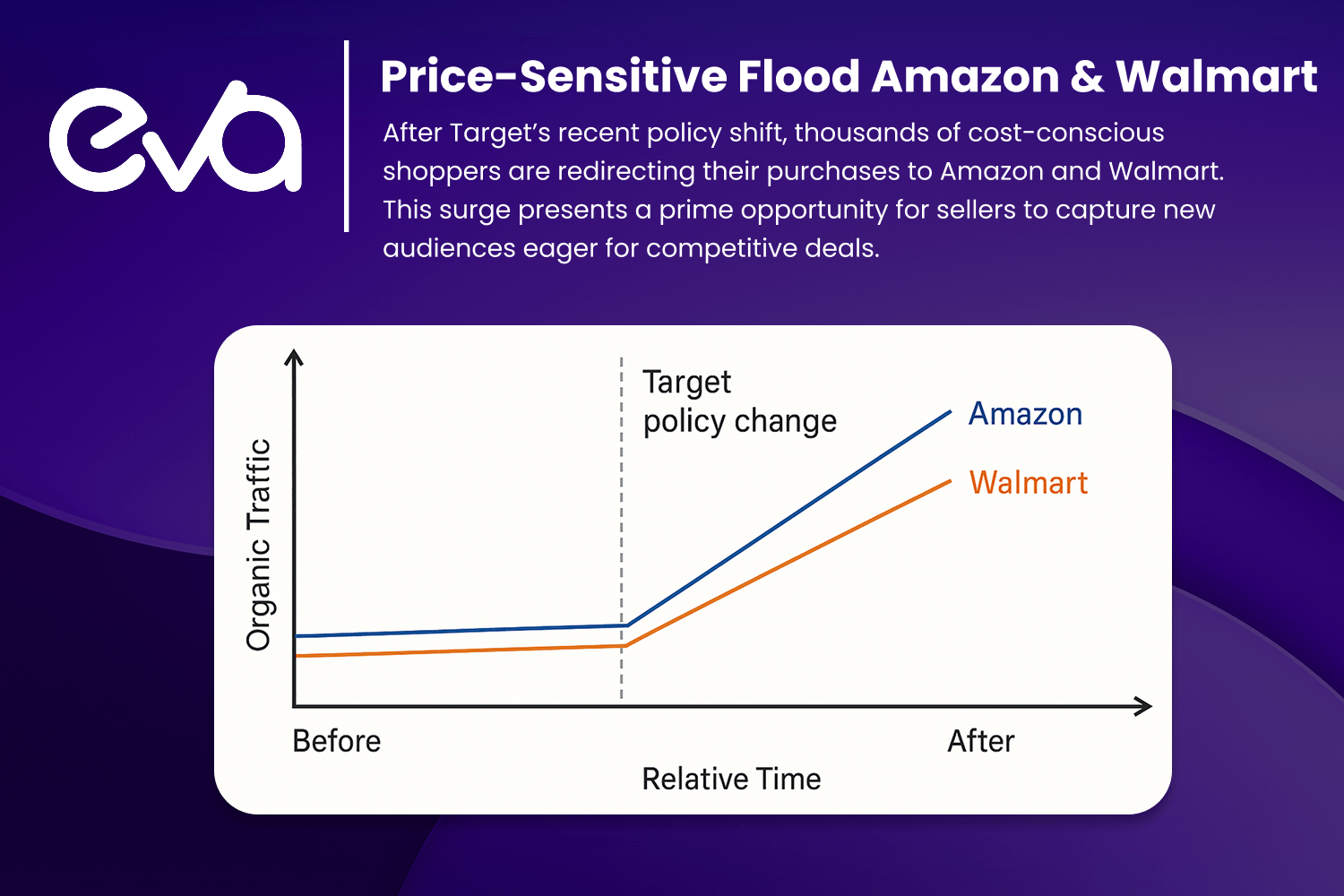
Long-Term Strategic Advantages
Target’s decision reflects broader retail consolidation around pricing strategies. Rather than competing on matching external prices, retailers are focusing on their own value propositions. This creates clearer differentiation between platforms and pushes price-conscious consumers toward marketplaces that consistently offer competitive pricing.
For e-commerce sellers, this means less pricing confusion for consumers. When shoppers know they need to go directly to Amazon or Walmart for the best deals, it streamlines the customer journey and reduces the friction that comes from cross-platform price comparison shopping.
Eva’s Four Pillars Strategy for Capitalizing on This Opportunity
At Eva, our AI-powered approach through the Four Pillars Strategy perfectly positions sellers to maximize this market shift:
Pillar 1: Driving Traffic Through Smart Advertising
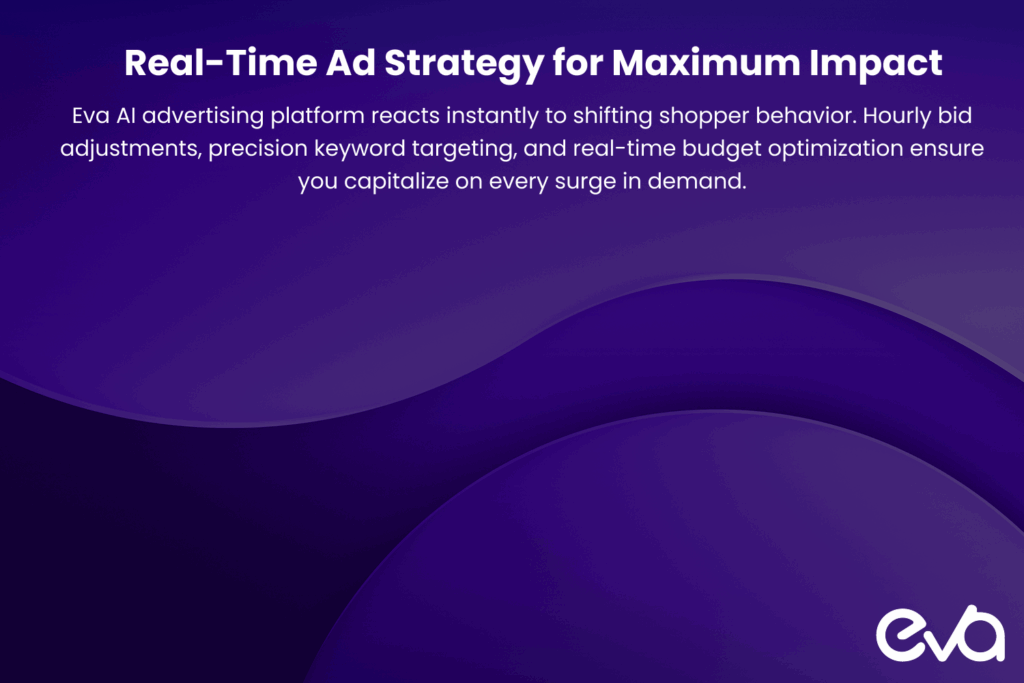
Hourly Bid Optimization: Eva AI’s precision hourly bid adjustments ensure your ads capture the increased search volume from redirected shoppers at optimal costs.
Long-tail Keyword Expansion: As former Target customers search for specific products and deals, Eva AI identifies and optimizes for the long-tail keywords they’re using, often with lower competition and higher conversion rates.
Inventory-Aware Advertising: Our system prevents advertising stockouts by monitoring inventory levels in real-time, ensuring you can fulfill the increased demand without disappointing new customers.
Pillar 2: Optimizing Conversion for Value-Focused Shoppers
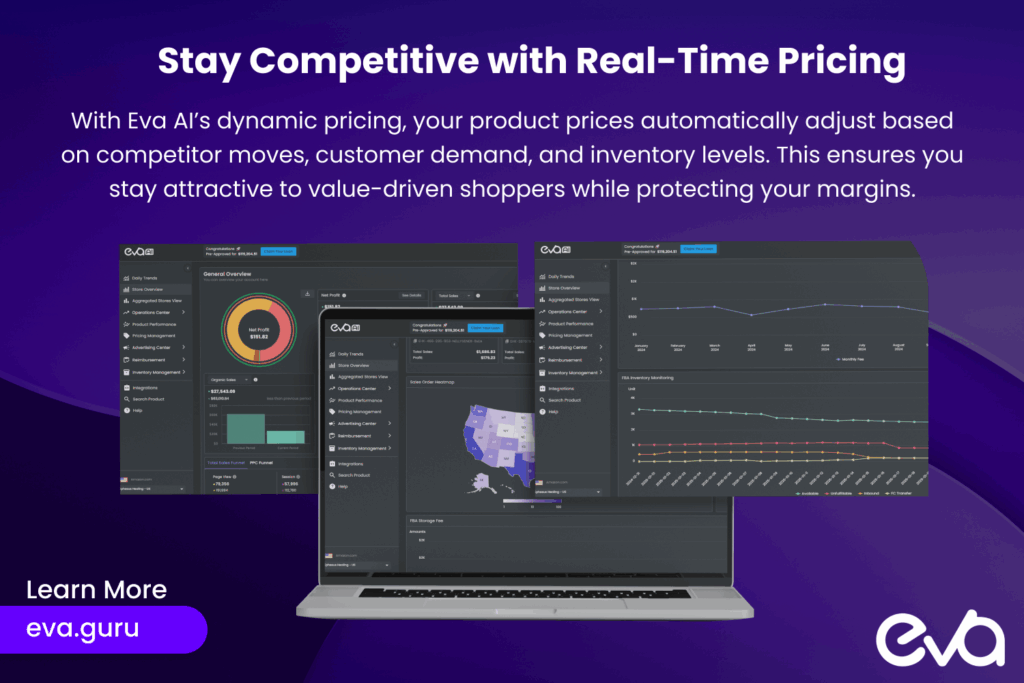
Competitive Positioning: Eva’s profit analytics provide store-level and product-level visibility to help you position your offerings competitively against the deals shoppers would have found through Target’s price matching.
SEO and Content Optimization: Our conversion-focused adjustments for images, pricing, and SEO ensure your listings appeal to the value-conscious mindset of redirected shoppers.
Dynamic Pricing Strategy: Eva’s dynamic pricing prediction considers competitor pricing, inventory levels, and target velocity to ensure you’re capturing maximum value from increased traffic.
Pillar 3: Ensuring Inventory Availability
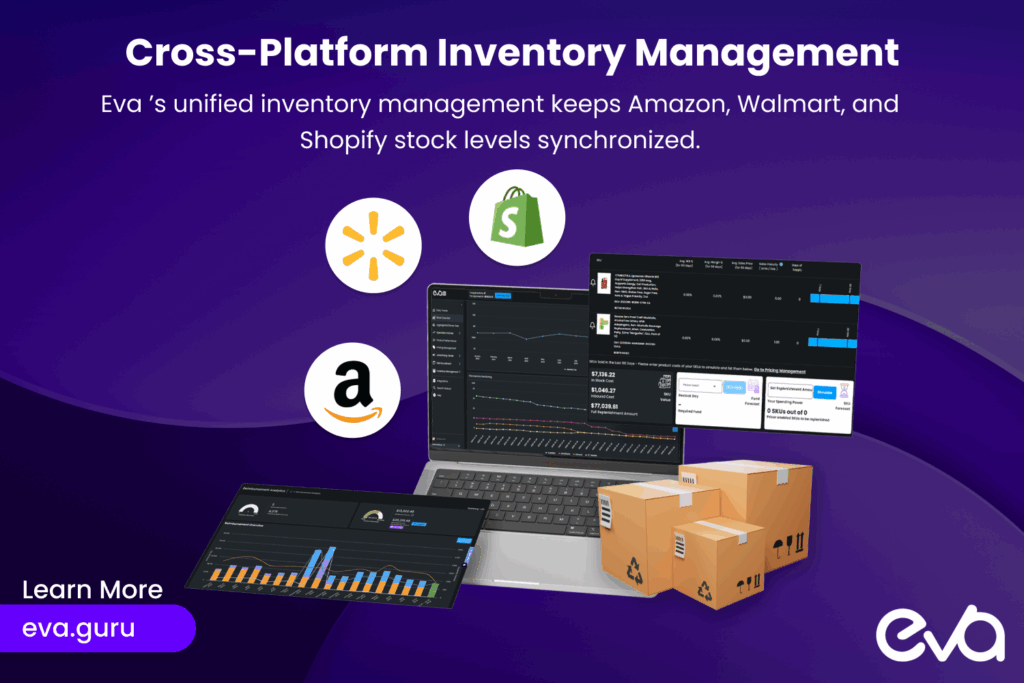
Replenishment Forecasting: With potential traffic surges, Eva’s inventory management prevents stockouts through cost simulation and advanced forecasting, ensuring you never miss sales opportunities.
Real-Time Inventory Tracking: Our system monitors inventory health across all platforms, helping you avoid storage fees while maintaining availability during demand spikes.
Purchase Order Management: Comprehensive reporting and management ensure you can scale inventory efficiently as traffic patterns change.
Pillar 4: Maximizing Profits from New Opportunities
Comprehensive Analytics: Eva’s profit analytics provide daily sales visibility and operational insights to help you understand and optimize your performance with newly acquired customers.
TACOS and BSR-Relevant Pricing: Our pricing algorithms ensure you’re maximizing profitability while remaining competitive for price-sensitive shoppers.
Cross-Platform Synchronization: Pricing synchronization across Walmart, Shopify, and Amazon ensures consistent value propositions across all touchpoints.
Immediate Action Plan for Sellers
Before July 28, 2025
Audit Your Competitive Position: Use Eva’s comprehensive analytics to understand where your pricing stands relative to competitors and identify opportunities for strategic positioning.
Optimize High-Traffic Listings: Focus on products in categories most likely affected by Target’s policy change—electronics, home goods, and frequently price-compared items.
Expand Keyword Strategies: Identify and bid on keywords related to value, deals, and competitive pricing that newly redirected shoppers might use.
Inventory Planning: Ensure adequate stock levels for products likely to see increased demand, using Eva’s forecasting tools to prevent stockouts.
Post-Policy Implementation
Monitor Performance Metrics: Track traffic patterns, conversion rates, and customer acquisition costs to measure the impact of the policy change on your business.
Adjust Advertising Budgets: Be prepared to scale successful campaigns as increased traffic validation occurs, using Eva AI’s automated optimization to maintain efficiency.
Analyze Customer Behavior: Use Eva’s analytics to understand how newly acquired customers differ from your existing base and adjust strategies accordingly.
The Broader E-Commerce Evolution
This policy change reflects larger trends in e-commerce that favor prepared sellers:
The most successful sellers are those operating across multiple platforms. 58% of Amazon sellers already list products on at least one additional e-commerce platform, with Walmart representing 12% of this diversification.
14% of small to medium business sellers have broken into six-figure earnings, with many growing into million-dollar enterprises. The traffic redirection from Target’s policy change accelerates this growth potential.
Sellers leveraging AI-powered solutions like Eva’s platform are better positioned to quickly adapt to market changes and capitalize on new opportunities.
Competitive Advantages Through Strategic Response
The sellers who will benefit most from Target’s policy change are those who can quickly adapt their strategies to capture redirected traffic. This includes:
Aggressive Promotion Strategies: Offering compelling deals and bundles that clearly demonstrate value compared to Target’s regular prices.
Enhanced Customer Experience: Ensuring that newly acquired customers have positive experiences that encourage repeat purchases and brand loyalty.
Data-Driven Decision Making: Using comprehensive analytics to understand traffic patterns and optimize for long-term customer value, not just immediate sales.
Looking Forward: Building Sustainable Growth
While the immediate opportunity from Target’s policy change is significant, the most successful sellers will use this traffic surge as a foundation for sustainable long-term growth. This means:
Building Brand Loyalty: Converting price-motivated first-time buyers into loyal customers through exceptional products and service.
Expanding Market Presence: Using increased sales velocity to improve organic rankings and establish stronger market positions.
Reinvesting in Growth: Leveraging improved profitability from new customers to expand product lines, improve inventory depth, and enhance competitive positioning.
Conclusion
Target’s elimination of competitor price matching creates a rare market shift with immediate opportunities for prepared sellers. Success depends on having the right technology, strategy, and execution capabilities in place.
Eva’s AI-powered platform and comprehensive service ecosystem provide the tools sellers need to capitalize on this change effectively. From precision advertising optimization to dynamic pricing strategies, our Four Pillars approach ensures you can drive traffic, optimize conversions, maintain inventory availability, and maximize profits as the market evolves.
The question isn’t whether this policy change will redirect traffic to Amazon and Walmart—it will. The question is whether your business is positioned to capture and convert that traffic into sustainable growth.
Ready to capitalize on this market opportunity? Claim your free audit and forecast to see how Eva can help you maximize the potential from Target’s policy change and build sustainable e-commerce growth across all platforms.
Eva combines advanced AI technology with experienced e-commerce experts to deliver sustainable growth and profitability for Amazon, Walmart, and omnichannel sellers. With over $6 billion in sales generated for clients and an average 51% increase in profits, Eva’s comprehensive platform provides the tools and expertise needed to thrive in today’s competitive e-commerce landscape.

